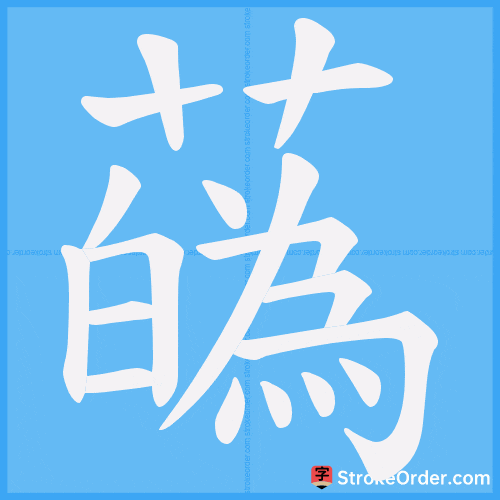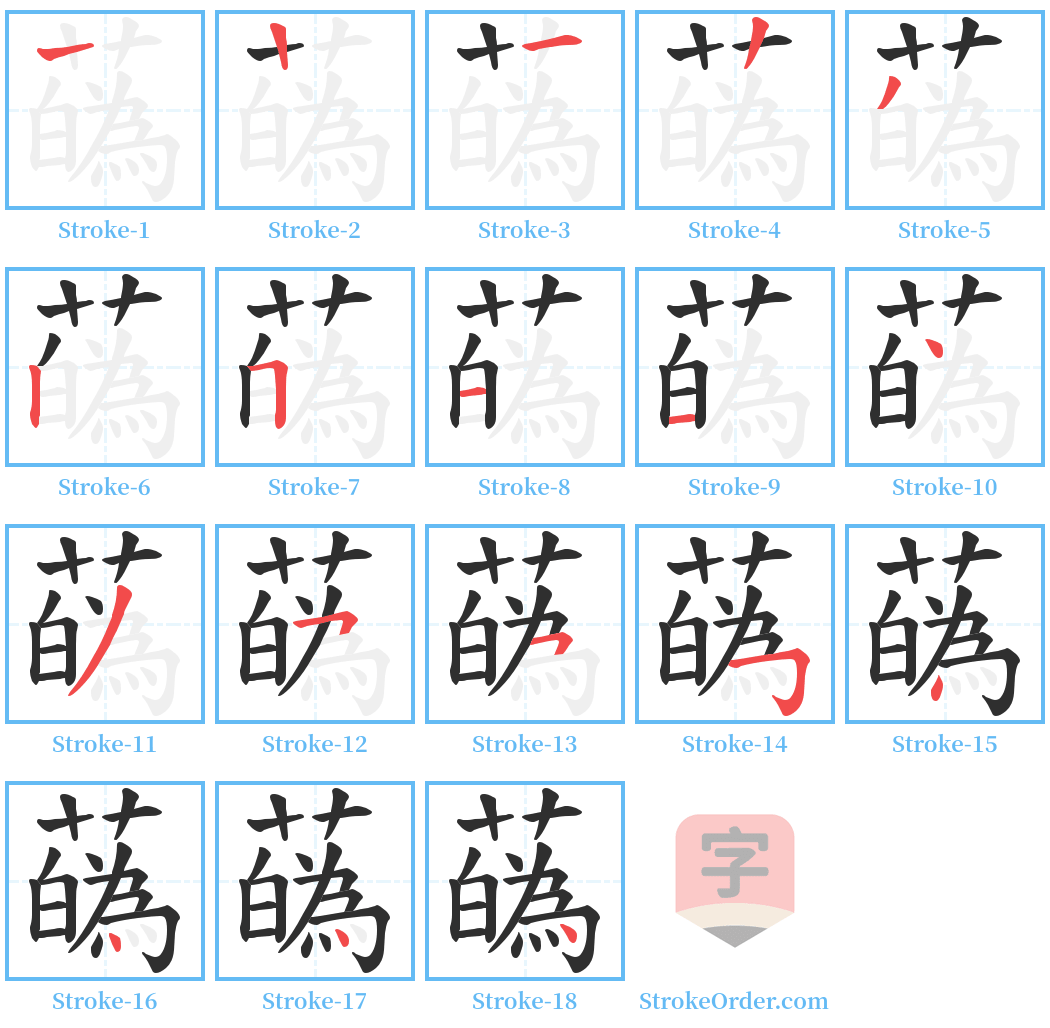蘤 Stroke Order
Animated Stroke Order of 蘤

Stroke Order Diagrams for 蘤

Information of 蘤
Pinyin
huā
Radical
艹
Strokes
20 strokes
Usage
★★
Definition
蘤
1. Same as "花" (flower).
"蘤" is defined as "flower" in "Guangya • Explanation of Herbs": "蘤, 华也." Wang Niancun’s commentary cites "The Book of the Later Han • Biography of Zhang Heng," which states: "Hundreds of flowers contain 蘤." Li Xian's note references Zhang's "Character Exegesis" saying: "蘤 is an ancient character for flower." The character 蘤 consists of the radical 艸 (grass) and 白 (white) as sound, and its ancient pronunciation was like "化," hence the character for flower is derived from the sound "化" and was originally written as 蘤. An example of its use can be found in Southern Dynasty Qi Yu Jian's "Spring Poem": "The gentle breeze stirs the mixed 蘤, the fine rain scatters among the clustered branches." Also in Tang Dynasty poet Wang Bo’s "Lotus Picking Rhapsody": "Red petals and scarlet 蘤, lightning flickers across a thousand miles."